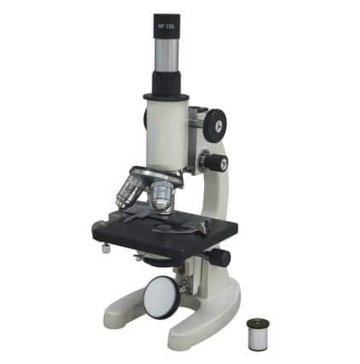
Different types of Biological Laboratory Microscopes you should know!
Our whole childhood revolved about the curiosity to peek into that hole and see a different side of the world- the microscopic world. This was only possible because we had that one great invention which could help us – the microscope. These are those instruments which are meticulously used to analyze and study the minute particles. In our childhood as a school student we may have only seen the simple and compound microscope there are many other kinds of it which are used in various fields for almost various uses. Let’s take a small account of all these different kinds of the most basic instrument in any laboratory for research.
Simple: It was the first one that was created ever. Invented in the 17th century, it was done by combining a convex lens with a holder of various test specimens. It helped Antony van Leeuwenhoek, the creator to study more about the red blood cells and it aided in the process. It had a magnifying power of 200-300 times at max. In the school, we may have only seen the picture of this simple type because the next version of this great product gave many better results.
Compound: With the configuration of two lenses, this type offers better performance than the simple one. This is because after magnification of the specimen by the first lens, the second lens magnifies the first lens. They are bright field devices and the tests can be viewed with better light. Also we can envision them monocular or binocularly. They offer a magnification of 1,100 times but they lack the clarity and resolution. Since they are an inexpensive option, they are still used everywhere from the schools to the research laboratories.
Stereo: This type is also given another name. It is called as dissecting microscope. These are used when you cannot view the opaque test subject on the compound type. They provide a better 3-D view of the surfaces of the test objects. These kind of instruments are used in various fields such as biological, medical science and electronics industry to take a better and closer look of the circuit boards or watches.
Coaxial: These are special type which find applications in advanced research work in medical laboratory education. A CO-AXIAL mechanical stage with buit in light arrangement hepls in reducing the amount of fumbling around for the controls, and allow you to keep your eyes looking down the eyepieces instead of looking for the stage controls. Thesy are easy to use and helps the students to understand the practicals which they read in theoretical subjects.
Projection: It is a type of a compound but with an extra feature. It is the feature of projecting the microscopic image to a wall or the projecting screen. This is can be used while you are explaining your observations for varied audience like classrooms. This is interfaced with a wide computer screen for quick and easy review.
Research: These are made for mostly research on life sciences. They are specificall made for scientists in universities or research laboratories. They have high resoltions, high magnification. Also, the imaging software and the microscopy cameras are often mixed with these research to help in simple analysis.